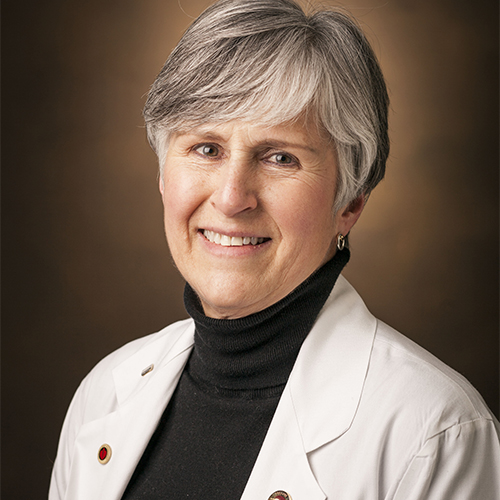Warfarin is fast becoming a dinosaur in atrial fibrillation care, with newer direct-acting anticoagulants (DOACs) now the dominant treatment for most patients, at nearly 67 percent by 2019.
However, the two leading DOACs, apixaban and rivaroxaban, have been the focus of a simmering debate that has left many clinicians unsettled.
In previous observational studies apixaban has demonstrated lower hemorrhagic risk and, in some studies, lower ischemic risk, than rivaroxaban. However, numerous questions remained as to their comparative effectiveness.
Helping to substantively resolve the debate is a new retrospective study led by Katherine Murray M.D., a professor of cardiovascular medicine, and Wayne Ray, Ph.D., a pharmacoepidemiologist and professor of health policy, both of Vanderbilt University Medical Center. Published in JAMA, this 580,000-plus patient study, the largest of its type, includes a revealing analysis of more subtle factors than previously examined.
“Among Medicare beneficiaries 65 years or older with atrial fibrillation, treatment with rivaroxaban was associated with a significantly increased risk of major ischemic or hemorrhagic events compared with apixaban,” Ray said. “These outcomes, in conjunction with other available data, provide a compelling rationale for apixaban as the preferred anticoagulant for patients with atrial fibrillation.”
“Prescribing anticoagulants is the most important thing we do in atrial fibrillation to reduce mortality,” Murray added. “The reason people die is strokes and embolism, so if we can distinguish between the two DOACs, it’s a clear benefit for our patients.”
Study Dissects Differences
The novelty of the Vanderbilt study is threefold:
- A significantly greater size over past studies, allowing for both more evidence and more granular detail regarding outcomes;
- The inclusion of patients taking low-dose apixaban and rivaroxaban; and
- A single endpoint that encompassed both the benefits and most clinically important risks of anticoagulation.
“Given the large sample size, we were able to identify the most serious bleeding events, which are intracranial bleeding and fatal extracranial bleeding,” Ray said. “That led us to create a single endpoint, which was major ischemic or hemorrhagic events, which provided a single measure of the relative efficacy and safety of both drugs.”
“These outcomes, in conjunction with other available data, provide a compelling rationale for apixaban as the preferred anticoagulant for patients with atrial fibrillation.”
Clear Advantages
The researchers enrolled 581,451 Medicare patients with atrial fibrillation who initiated treatment between 2013 and 2018 and who were followed for up to four years. Rivaroxaban was prescribed to 227,572 (39.1 percent), and apixaban to 353,879 (60.9 percent). The researchers controlled for 208 covariates, including varying practice settings, insurance programs and other characteristics.
Across the study group, 6,946 major events occurred during the follow-up period, 2,807 ischemic and 3,139 hemorrhagic.
Patients taking rivaroxaban had a higher incidence of these outcomes as compared to those taking apixaban (16.1 versus 13.4 per 1,000 person-years), with higher rates of ischemic stroke (8.3 versus 7.2 per 1,000 person-years), hemorrhagic stroke (2.5 versus 1.7 per 1,000 person-years) and fatal extracranial bleeding (1.4 versus 1.0 per 1,000 person-years).
“The reason people die is strokes and embolism, so if we can distinguish between the two DOACs, it’s a clear benefit for our patients.”
Secondary analyses also revealed a higher risk of non-fatal extracranial bleeding with rivaroxaban as compared to apixaban (39.7 versus 18.5 per 1,000 person-years), including the risk for bleeding at gastrointestinal sites (35.2 versus 16.3 person-years).
Murray said the inclusion of low-dose patients offered further insight.
“These turned out to be 23 percent of the patients, and the most vulnerable ones. We hypothesized that they might be the most sensitive to excessive fluctuation in plasma concentration, and this was consistent with the findings.”
X Inhibitors
Both rivaroxaban and apixaban are reversible inhibitors of activated factor X. They intervene further down the coagulation cascade than vitamin K antagonists such as warfarin, Ray explained, driving a more predictable response. The two DOAC drugs differ in dosage, both in milligrams and frequency. Rivaroxaban is taken once daily and apixaban twice daily. Each can be prescribed at a regular or low dose in standardized milligrams regardless of patient weight.
“Many have raised the question of how significant their differing pharmacokinetics may be,” Ray said. “There may be an advantage to the twice daily dosing with apixaban in terms of more even plasma concentrations. It may also be more forgiving of missed doses.”
Distinctive Results
Murray and Ray say clinicians can look to the totality of the evidence for guidance, which they say includes the pharmacokinetic risk from fluctuating plasma concentrations; pivotal clinical trials that demonstrated rivaroxaban was not inferior to warfarin, whereas apixaban was superior to warfarin in lowering risks of both ischemic and hemorrhagic events; and multiple other studies finding higher serious bleeding risks with rivaroxaban.
“For those of us working in arrhythmia management, these findings help make a clear distinction between the DOACs,” Murray said.






